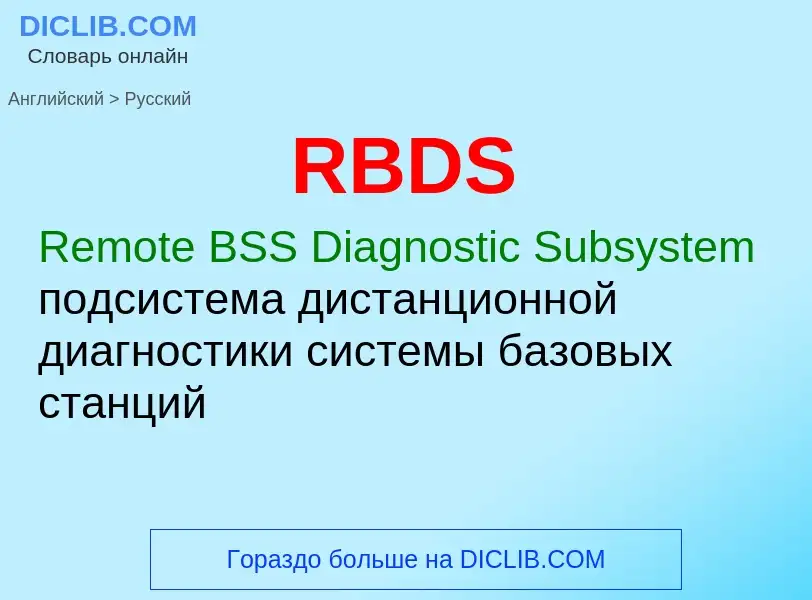Translation and analysis of words by ChatGPT artificial intelligence
On this page you can get a detailed analysis of a word or phrase, produced by the best artificial intelligence technology to date:
- how the word is used
- frequency of use
- it is used more often in oral or written speech
- word translation options
- usage examples (several phrases with translation)
- etymology
RBDS - translation to russian
сокращение
[reliability block diagram] блок-схема расчёта надёжности
Wikipedia
Radio Data System (RDS) is a communications protocol standard for embedding small amounts of digital information in conventional FM radio broadcasts. RDS standardizes several types of information transmitted, including time, station identification and program information.
The standard began as a project of the European Broadcasting Union (EBU), but has since become an international standard of the International Electrotechnical Commission (IEC). Radio Broadcast Data System (RBDS) is the official name used for the U.S. version of RDS. The two standards are only slightly different, with receivers able to work with either system and only minor inconsistencies in the displayed data.
Both versions carry data at 1,187.5 bits per second on a 57 kHz subcarrier, so there are exactly 48 cycles of subcarrier during every data bit. The RBDS/RDS subcarrier was set to the third harmonic of the 19 kHz FM stereo pilot tone to minimize interference and intermodulation between the data signal, the stereo pilot and the 38 kHz DSB-SC stereo difference signal. (The stereo difference signal extends up 38 kHz + 15 kHz = 53 kHz, leaving 4 kHz for the lower sideband of the RDS signal.)
The data is sent with an error correction code, but receivers may choose to use it only for error detection purposes. RDS defines many features including how private (in-house) or other undefined features can be "packaged" in unused program groups.


![Demodulator]] [[Sanyo]] LC72723 Demodulator]] [[Sanyo]] LC72723](https://commons.wikimedia.org/wiki/Special:FilePath/JVC MX-J950R - antenna tuner module - Sanyo LC72723-3896.jpg?width=200)



![An example of RT RDS on Los Angeles' [[KFSH-FM]] An example of RT RDS on Los Angeles' [[KFSH-FM]]](https://commons.wikimedia.org/wiki/Special:FilePath/Radio Data System (RDS) on 95.9 KFSH La Mirada.jpg?width=200)

.jpg?width=200)
![The band performing in [[Tijuana]] during Tour Generación RBD in 2005. The band performing in [[Tijuana]] during Tour Generación RBD in 2005.](https://commons.wikimedia.org/wiki/Special:FilePath/Anahí Puente 5, 2009.jpg?width=200)
